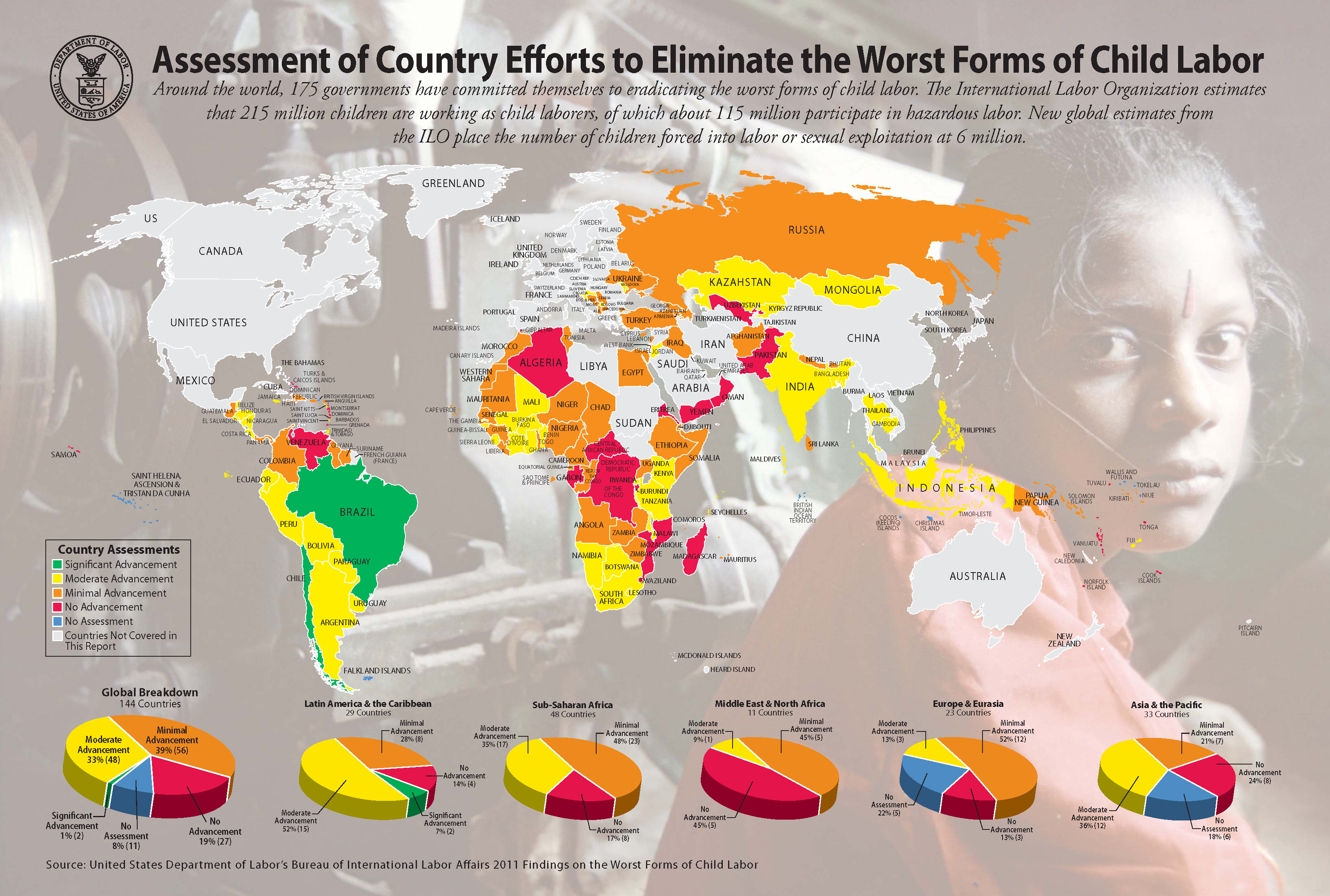Written by Cecilia
The World Day against Child Labour was established by the UN in 2002 to raise awareness and encourage actions about a current global issue: more than 168 million children between the age of 5 and 17 are involved in child labour. What are the causes and the consequences of this sad state of affairs?

There are many factors that create the conditions necessary for child labour to become a major issue. The link between child labour and poverty is clear. Child labour is related to the failure to ensure that all children are attending school. Additionally, it is related to the lack of social protection of the potential child labour force. Another major factor is the economic necessity that forces many children and their families to rely on the labour and income their children can generate.
What is the link between child labour and education?
Education plays a key role and this is the reason why The World Day against Child Labour 2015 focuses on the importance of quality education as the key element in tackling child labour issues. Today is an opportunity to reflect on the failure of the Millennium Development Goal to adequately challenge the underlying causes of child labour. Education – and its role in the battle against child labour – is a driver of social and economic development: it requires attention and investment!

Within this framework many factors influence each others: lack of education is one of the preconditions that will drive a child towards child labour and, inverting this, child labour burdens can prevent children from accessing education. These two factors are related to a third one: child labour potentially leads to young people’s unemployment later in life. While 168 million of children are involved in child labour, 75 million of young people aged 15-24 are unemployed. As the International Labour Organisation puts it:
“Lack of schooling results in missing educational qualifications and higher skills thus perpetuating their life in poverty.”
Link Ethiopia believes education changes lives and quality education drives social and economic development. Link Ethiopia reflects on the following question: Why Education?.

An ILO report from 2001 argues that poverty and its related issues are the principal causes that lead to child labour in Ethiopia. Children are required to work in order to supply family income. Furthermore, children are paid lower wages and do not demand workers’ rights. Another crucial cause of child labour is related to educational problems, such as distance from school, poor quality of education, lack of schooling material and over-crowding. We are already playing an important role in the march towards better education in Ethiopia and, therefore, towards an Ethiopia free from child labour.
One key way in which you could work with us to achieve this is joining Link Ethiopia’s Child Sponsorship programme, which works to:
- Tackle overcrowding by helping to fund classroom construction.
- Improves quality of education by funding teacher training – e.g. phonics training.
- Provides the resources – books, pens, uniform, shoes etc. – for children from particularly impoverished families, to reduce the financial burden of education placed on them, and reducing the likelihood that that child’s labour is then needed.
- Supports students with additional tuition and training – to better aid them to achieve their potential.